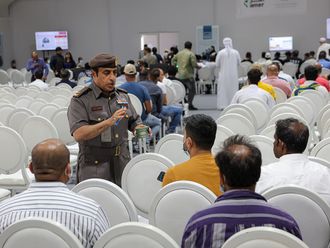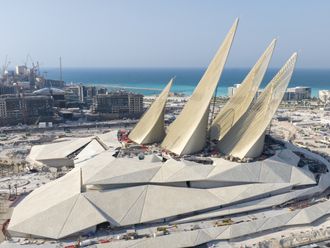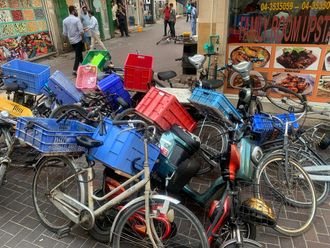A project launched in January this year to solve the problem of salinity in soil used for agriculture in Abu Dhabi is being carried out with great speed, sources involved in the project said yesterday.
The scheme, by the Sewerage Project Committee (SPC) of Abu Dhabi Municipality, is being carried out with the cooperation of the Dubai-based International Centre for Biosaline Agriculture (ICBA). The Municipality has also retained Parsons International Ltd. to a study the scheme as project consultant.
According to Dr Bassam Hasbini, an irrigation management specialist at ICBA, the work involves preliminary investigation to define the extent of the problem and design of subsurface drainage system for a pilot project.
Monitoring activities cover the installation of a network of piezometers and collection of depth-to-water and salinity measurements prior to and after the installation of the pilot drainage network.
"It is expected that the results of this study will provide accurate recommendations for a concept design of a drainage network that will solve the problems of waterlogging and associated salinity throughout affected areas," Dr Hasbini explained.
The project is being carried out in the Ajban area near Abu Dhabi-Dubai Highway, where activities were initiated in a rectangular grid of 28 farms covering all the Al Ajban area.
Information collected from these farms included water table elevation and salinity, chemical composition of the water, as well as other information related to agricultural activities and productivity.
Piezometers were installed in these farms to assist in sampling and water table monitoring. In addition, a basic topography survey was conducted to delineate depressions and identify problem areas.
The results of these efforts, according to Dr Hasbini, combined with farmers information, confirmed that rising water table resulted from accumulated irrigation water rather than rising native ground water.
Later a pilot project area, consisting of six farms, was identified out of the 600 farms in Al Ajban through coordination meetings with SPC, Parsons International and the Agricultural Extension Department of the municipality.
Work on the pilot project area is almost ready. The overall project, Dr Hasbini said, will be continued the rest of Ajban and other areas based on the results of the pilot project.
Elaborating on the scientific research on the irrigation and ground water samples collected in the area, Dr Hasbini said the objective of these analyses was to determine the suitability of ground water in reuse alternatives.
"Results indicated that most ions are within safe limits for reuse although the overall total dissolved solids content is high. Stiff diagrams of irrigation and ground water samples revealed the presence of three 'types' of irrigation water and four 'types' of ground water," he explained.
Differences in irrigation water reflected different mixing ratios of desalinated and ground water. Differences in Stiff diagrams for ground water were used to delineate drainable areas in Al Ajban.
Results indicated that the installed pilot drainage system will solve waterlogging and salinity problems for 25 farms covering a critical area totaling 70 hectares located around the pilot project farms.
Referring to the root of the problem, he said that agriculture in the Emirate of Abu Dhabi expanded rapidly during the last decade, new agricultural areas being established over barren desert lands to meet the growing demand for food and animal fodder, by adding fertile soil layers.
Historically, he said, the solution for waterlogging has been to top waterlogged soils with a 75 cm layer of sand. This procedure has complicated the issue from several perspectives.
Firstly, the volume of added soil will displace an equivalent volume of water to neighbouring farms effectively "exporting" the problem to neighbouring areas. Secondly, problems are likely to reappear within two agricultural seasons, as accumulated water was not removed.
"The ultimate solution is to remove accumulated water and reuse it where possible, to maximise the benefit of this scarce resource," he advised.
He further suggested that subsurface drainage systems can improve this situation by reducing water table elevation.
Project to fight soil salinity
A project launched in January this year to solve the problem of salinity in soil used for agriculture in Abu Dhabi is being carried out with great speed, sources involved in the project said yesterday.










